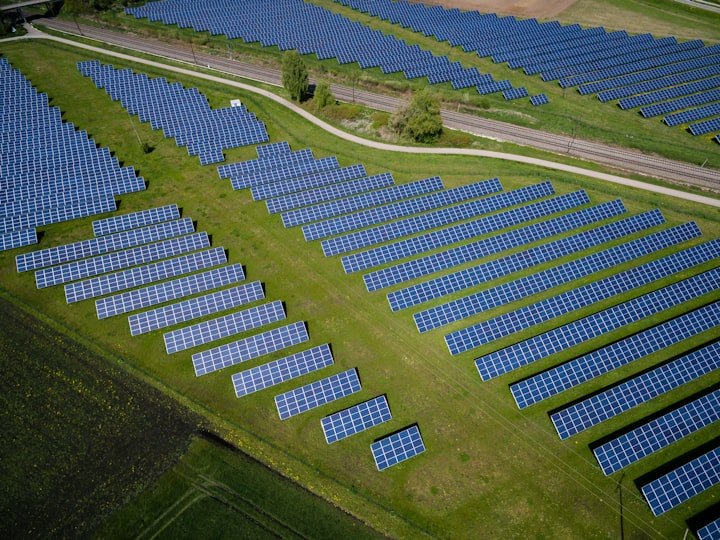Conserving our Earth by using alternative(clean energy) source
Conserving our Earth by using alternative(clean energy) source

Since sunlight is a renewable source, its direct use can be achieved by producing its own energy. In addition to solar panels that convert their light into electricity, solar-powered plants use mirrors to focus on the sun's heat to produce thermal energy.
Renewable energy sources such as wind, solar power, electric power, and geothermal energy are much more stable than fossil fuels. They do not incur the required fuel costs for travel and offer great price stability. They can be used to produce electricity that has a low impact on the environment.
By choosing to reduce energy consumption, you help save the limited natural resources used by energy plants. Reducing energy consumption reduces the amount of electricity produced by energy plants, which reduces the amount of fuel used daily. Reducing energy consumption in your home by switching from grid to solar energy helps the environment, saves resources, and saves lives.
The use of clean, renewable energy is one of the most important ways to reduce your impact on the environment. Electricity generation is our main source of greenhouse gases (in addition to driving or flying) and when combined with clean energy we can reduce harmful smoke and toxic fumes in the air and water due to coal mining and gas extraction.
By using solar energy instead of traditional energy sources, we can take steps to build a cleaner Earth for future generations. One of the great benefits of solar energy is the constant and steady discovery of the amount of solar energy that the Earth receives each year, making the sun a source of energy for coal and other fossil fuels.
The production of coal, nuclear power, and other renewable energy sources harms our environment and pollutes our air, land, and water. Excessive use of energy not only affects weather patterns and stored resources but also harms animals and ecosystems. Unlike fossil fuels such as coal, oil, and natural gas, renewable energy is produced by natural processes that replenish sunlight, geothermal energy, wind, waves, water, and various forms of biomass.
If we can prove that the above is a guide to other energy sources, our planet will have more natural resources that can be used to generate energy. By using biomass to produce energy, we can become more independent of traditional energy sources such as coal-fired, fossil fuels that emit greenhouse gases from our environment. Traditional energy sources using coal and fossil fuels emit large amounts of harmful gases and particles into the atmosphere, so it should come as no surprise to the world that sending signals and warnings that we should use as many other energy sources as possible.
In contrast, fossil fuels such as oil, coal, and natural gas are non-renewable and their value is limited; once released, they will no longer be available as active energy sources. When people use underground energy sources to heat their homes or provide hot water, they do not release natural fuels into the environment.
Thermal energy - solar heat - can be converted into electricity by a few different systems based on higher temperatures. Energy from wind turbines can be converted and used to reduce electricity costs. Cold sea surface water can be used to cool buildings, saltwater can produce products, and coastal communities use the methods described above to enter natural ocean power to meet electricity and energy needs.
Bioenergy is a form of renewable energy from biomass that can be used to heat electricity or to create liquid fuels such as ethanol and biodiesel that can be used for transportation. Biomass is a flexible source of energy that can be used to power cars, burn buildings, and generate electricity in contrast to solar energy. The process by which another energy is generated is to convert biological material into waste products, which can be used as a source of heat energy, power generation, and transportation.
Hydroelectric power plants use solar energy to produce clean electricity without any environmental impact on the production process. Wind power is another renewable energy source that could end the US alliance with oil and gas suppliers.
Wind power can only be used in areas with strong winds, which means it will not be used as a source of energy for the earth's energy output. Solar energy can be used to produce solar energy, used to dry clothes and used in the process of photosynthesis by plants, and used by humans in winter to heat the body heat. It is not used at night when there is no sunlight trapped in the solar panels.
We call the various energy sources that provide electricity without harming the planet and without affecting our quality of life "renewable energy," because it can replenish itself without human help.
They are responsible for generating electricity from the sun, air, water, geothermal energy, and geothermal energy. We urge local and local governments and university campuses to set high targets to meet their energy needs with solar, wind, and other renewable resources. A study by the Union of Concerned Scientists of 25% of renewable energy in 2025 in 2009 found that the same policy would create three times as many jobs (more than 200,000) and generate the same electricity as petrol (15).
About the Creator
Rashmi Dahal
Hello everyone!





Comments
There are no comments for this story
Be the first to respond and start the conversation.